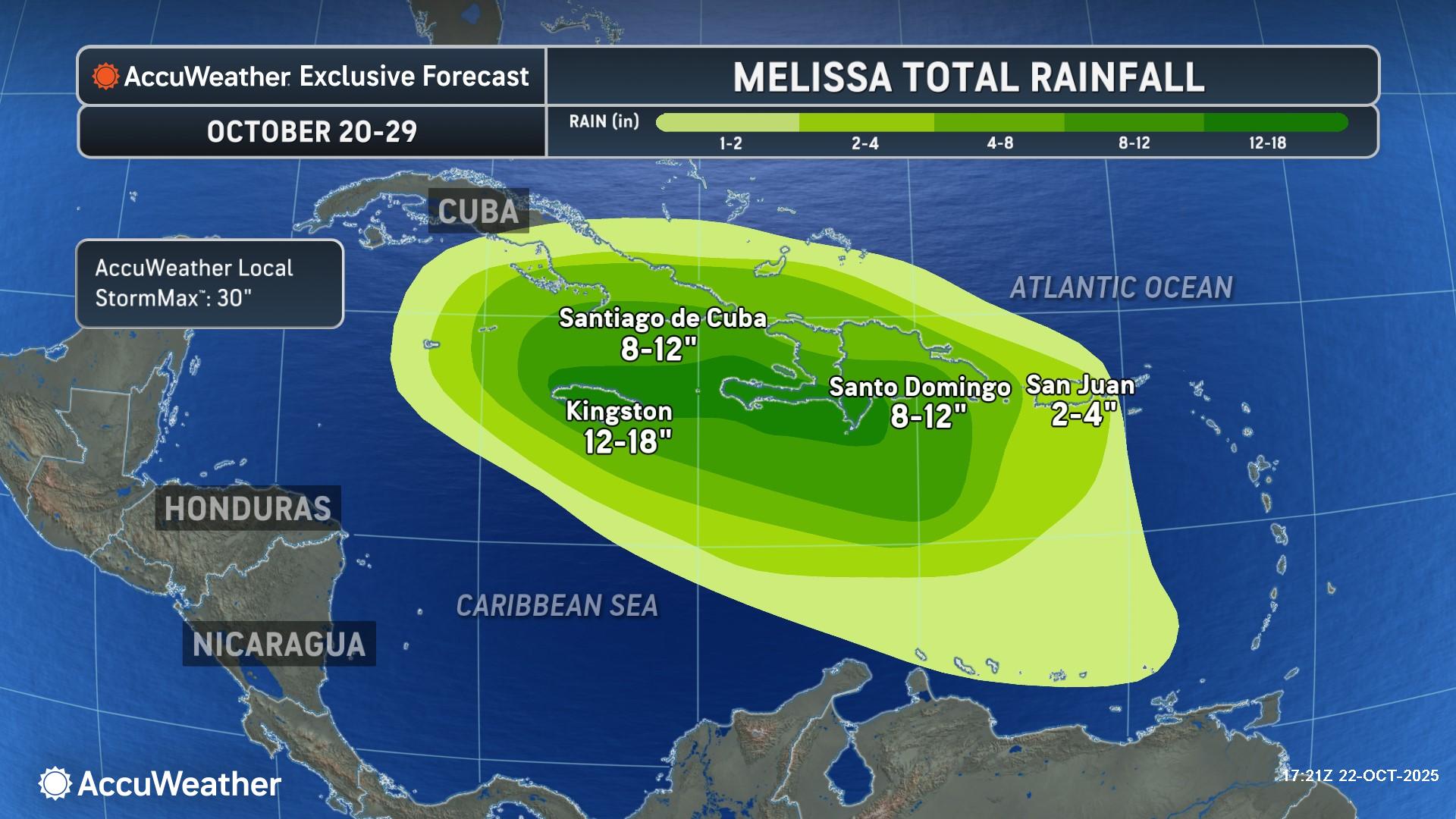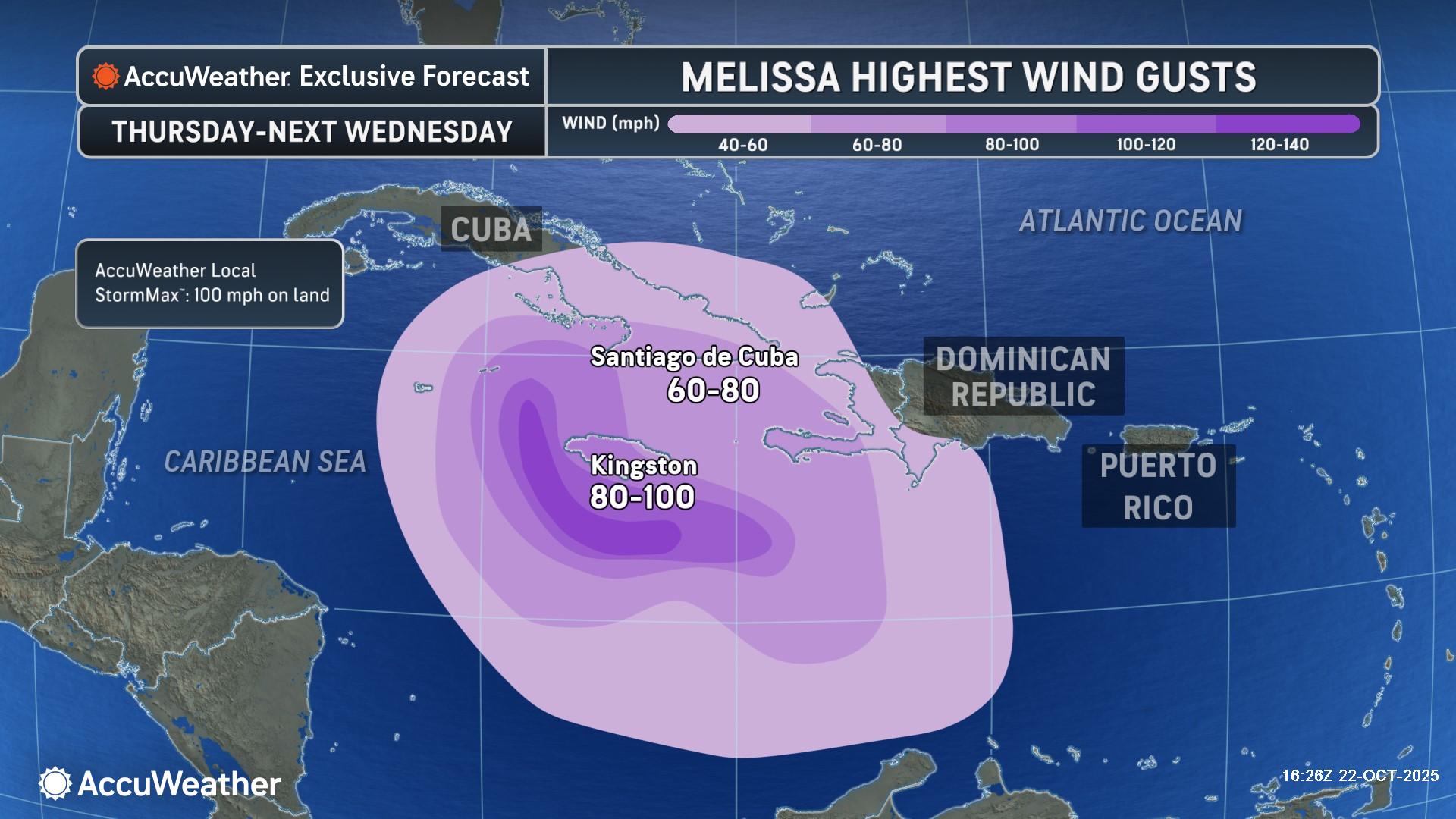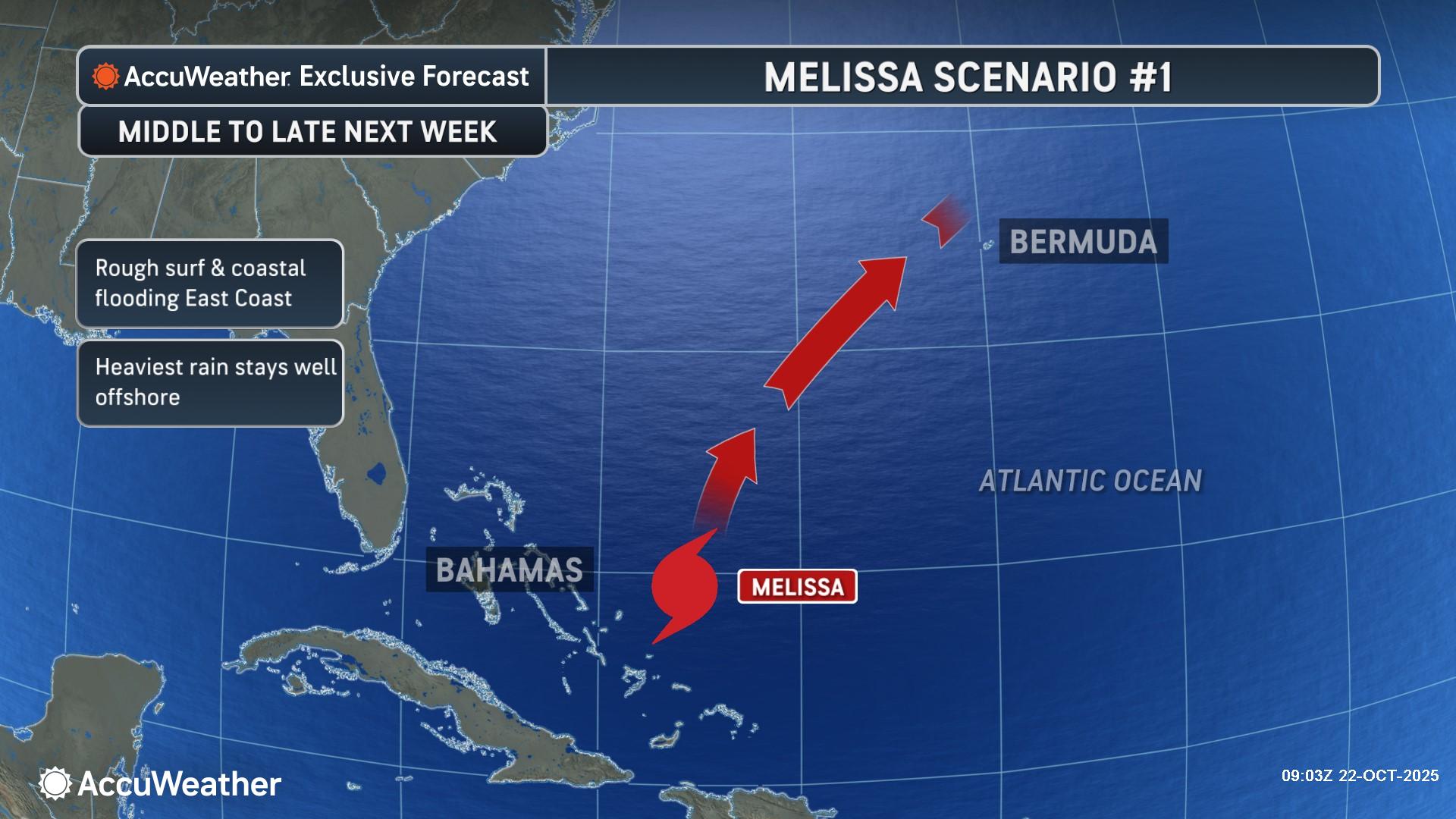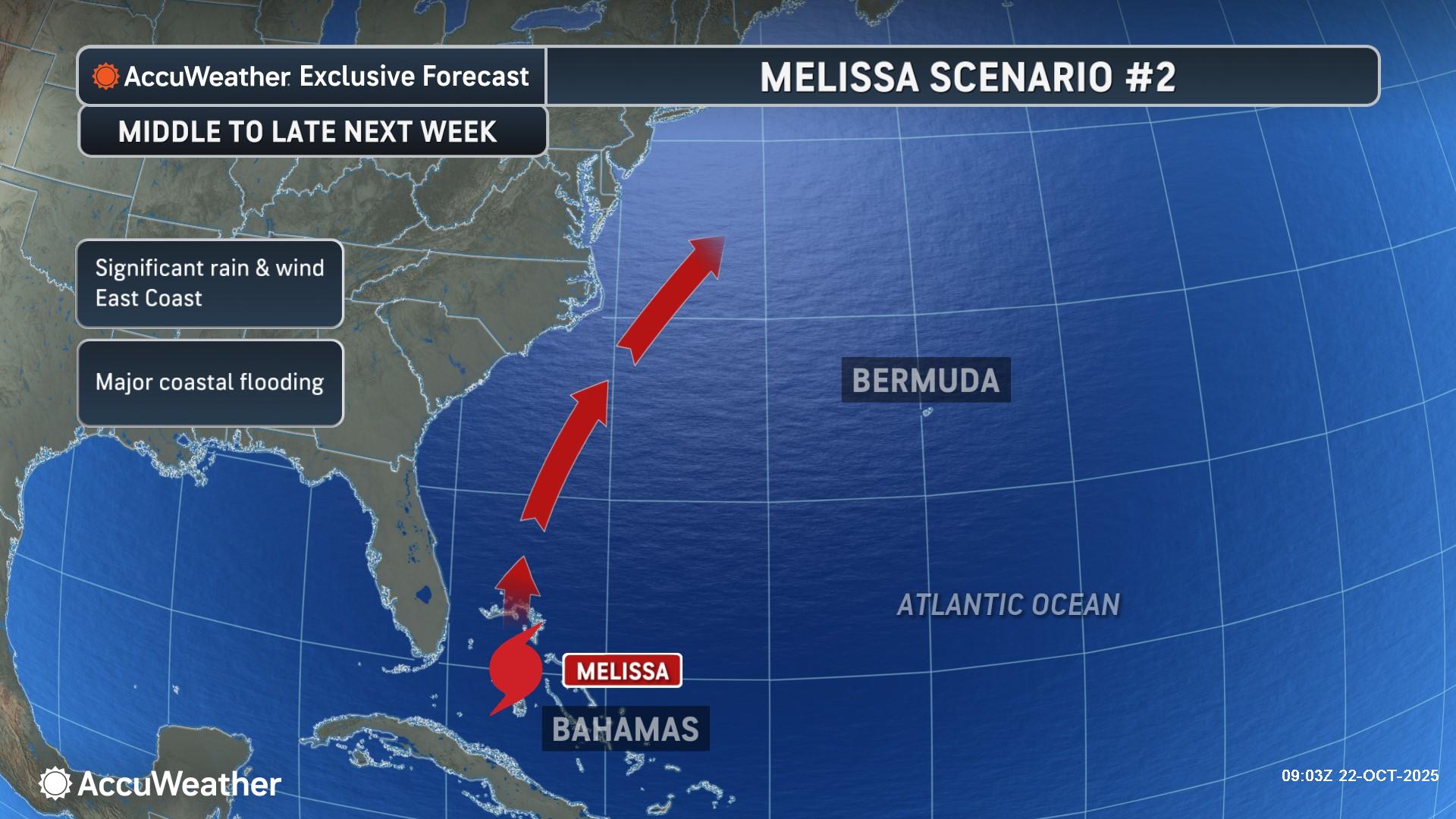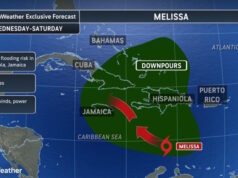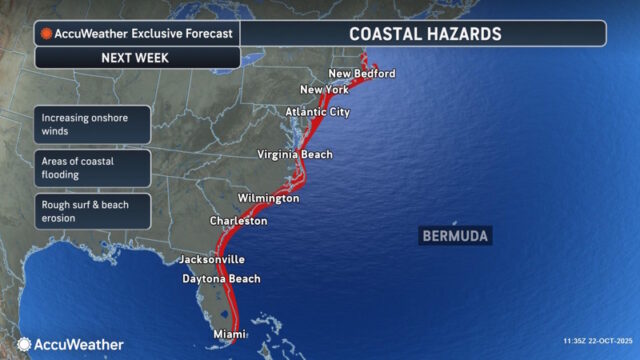
AccuWeather® Global Weather Center – Oct. 22, 2025 – AccuWeather® hurricane experts say torrential rainfall from slow-moving Tropical Storm Melissa poses an extreme risk to lives and property across parts of Haiti and the Dominican Republic, as well as all of Jamaica.
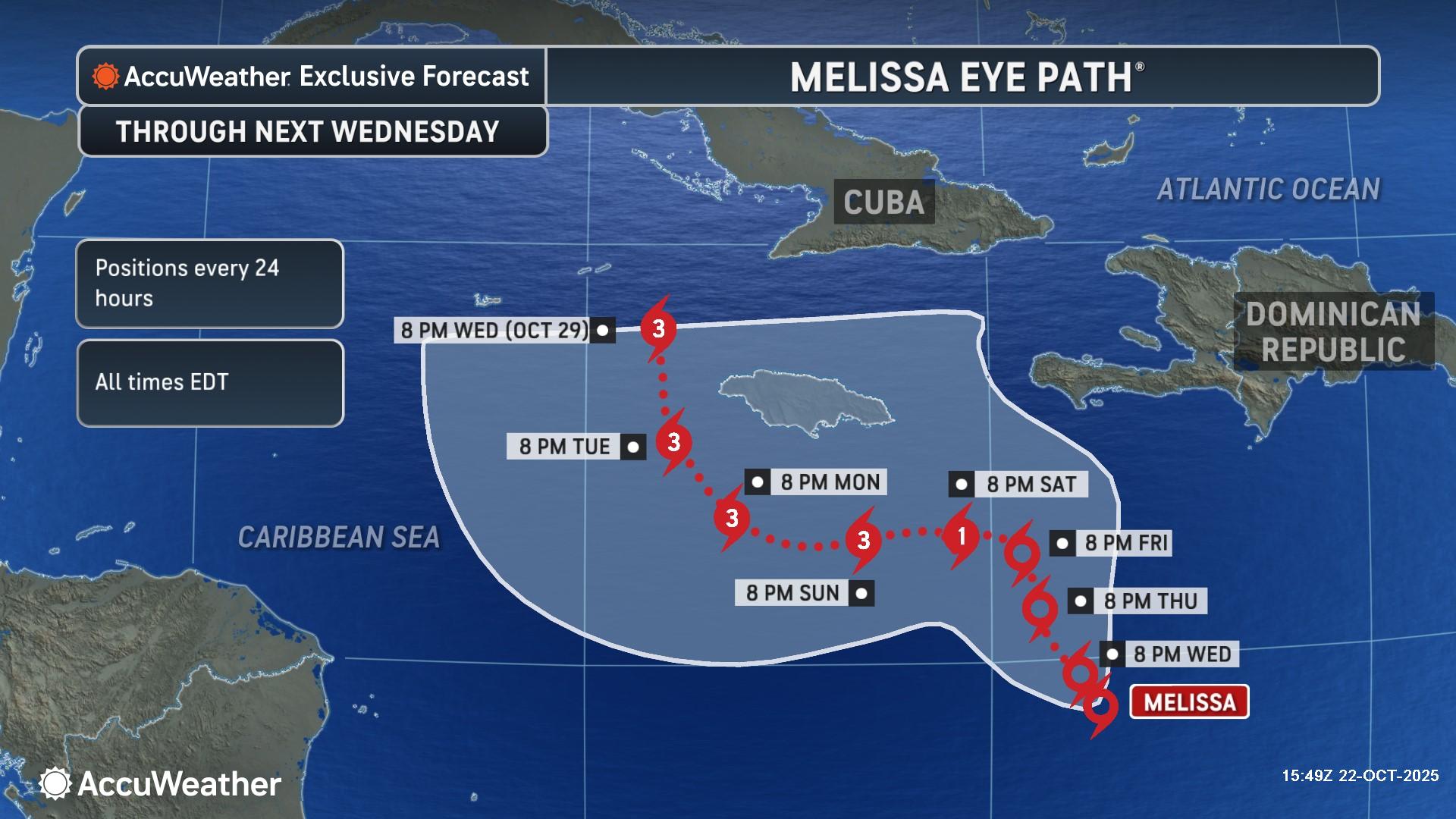
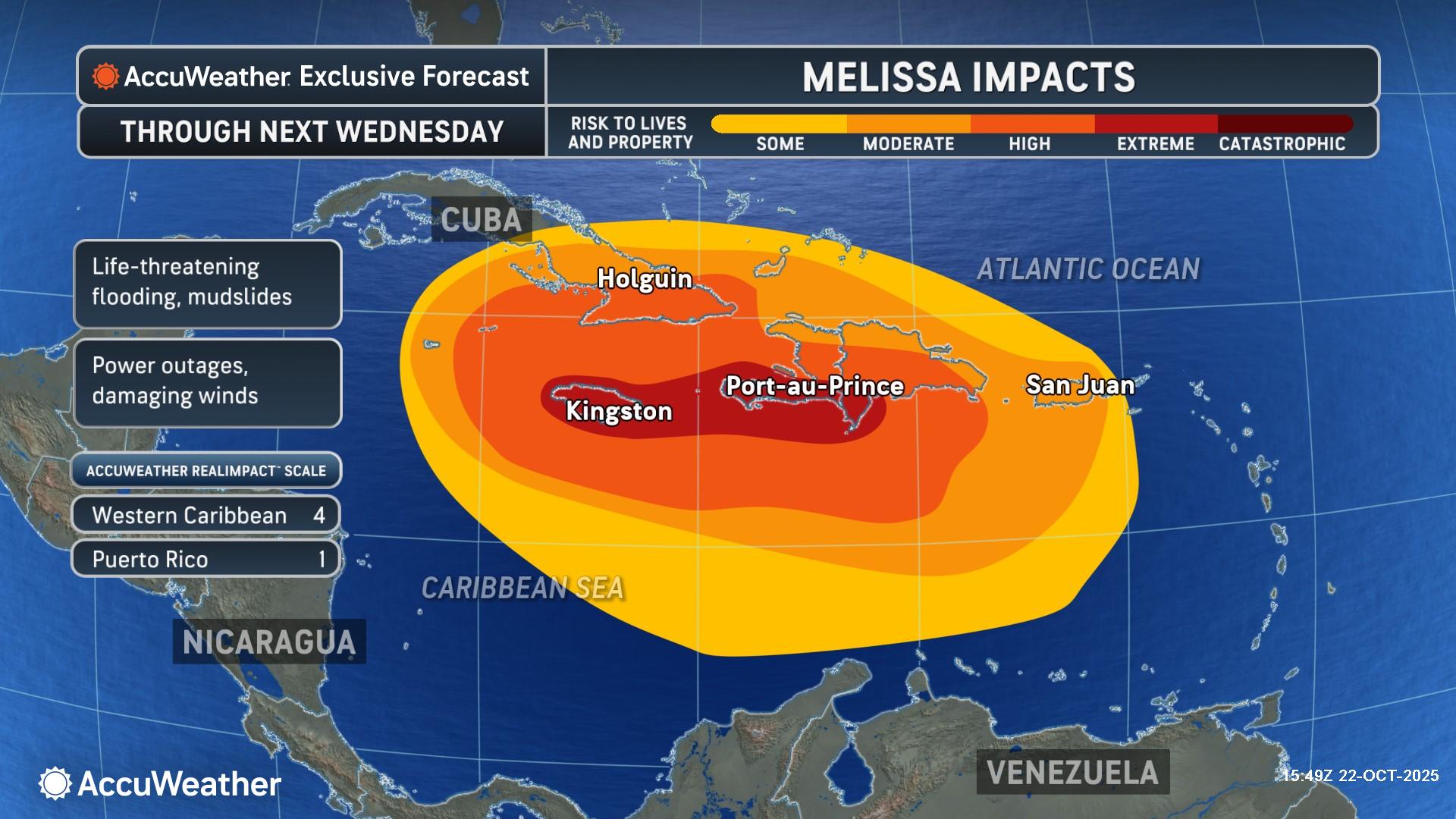
“The exceptionally warm waters of the Caribbean will provide extra energy for Melissa to strengthen. This storm is expected to rapidly intensify into a major hurricane once it enters an area with less disruptive wind shear south of Jamaica,” AccuWeather® Lead Hurricane Expert Alex DaSilva said. “Melissa poses a major threat to islands across the western Caribbean. People across Haiti, the Dominican Republic, Cuba and Jamaica need to prepare for the increasing threat of torrential rainfall, flash flooding, power outages, mudslides and roads being washed out. In the hardest hit areas, the impacts from Melissa could be catastrophic.”
AccuWeather® hurricane experts say rainfall amounts of 8-16 inches can occur across much of southern Hispaniola, eastern Cuba and Jamaica, with an AccuWeather Local StormMax™ of 30 inches. Heavy rain from Melissa can lead to widespread, life-threatening and potentially catastrophic flash flooding and mudslides, especially near areas with steep and mountainous terrain.
People in the Cayman Islands should closely monitor AccuWeather forecast updates closely. Several inches of rain and gusty winds could impact the Cayman Islands. Parts of Puerto Rico could also be impacted by flooding rainfall.
“The steering winds are very weak, allowing Melissa to slowly meander around the Caribbean. The slow movement of this storm significantly increases the risk of life-threatening flooding,” DaSilva warned. “Hours or even days of heavy rainfall can trigger life-threatening flash floods and mudslides, especially in areas near steep, mountainous terrain.”
US East Coast Potential Impacts and Area to Watch
AccuWeather® hurricane experts say factors including how far west Melissa moves in the Caribbean and jet stream winds will play an important role in determining if Melissa can be pulled out to sea and away from the United States or if it can curl closer to the mainland before turning away next week. The East Coast of the United States and the Bahamas should be alert for the potential increase in onshore winds, areas of coastal flooding, rough surf and beach erosion next week.
“A dip in the jet stream over the Southeast U.S. and strong, upper-level winds are expected next week, which should prevent movement toward the Gulf Coast states. The risk of direct rain and wind impacts on the U.S. is low, but it cannot be ruled out,” DaSilva said. “Melissa could bring rough surf, coastal flooding and beach erosion to parts of the U.S. East Coast starting next week.”
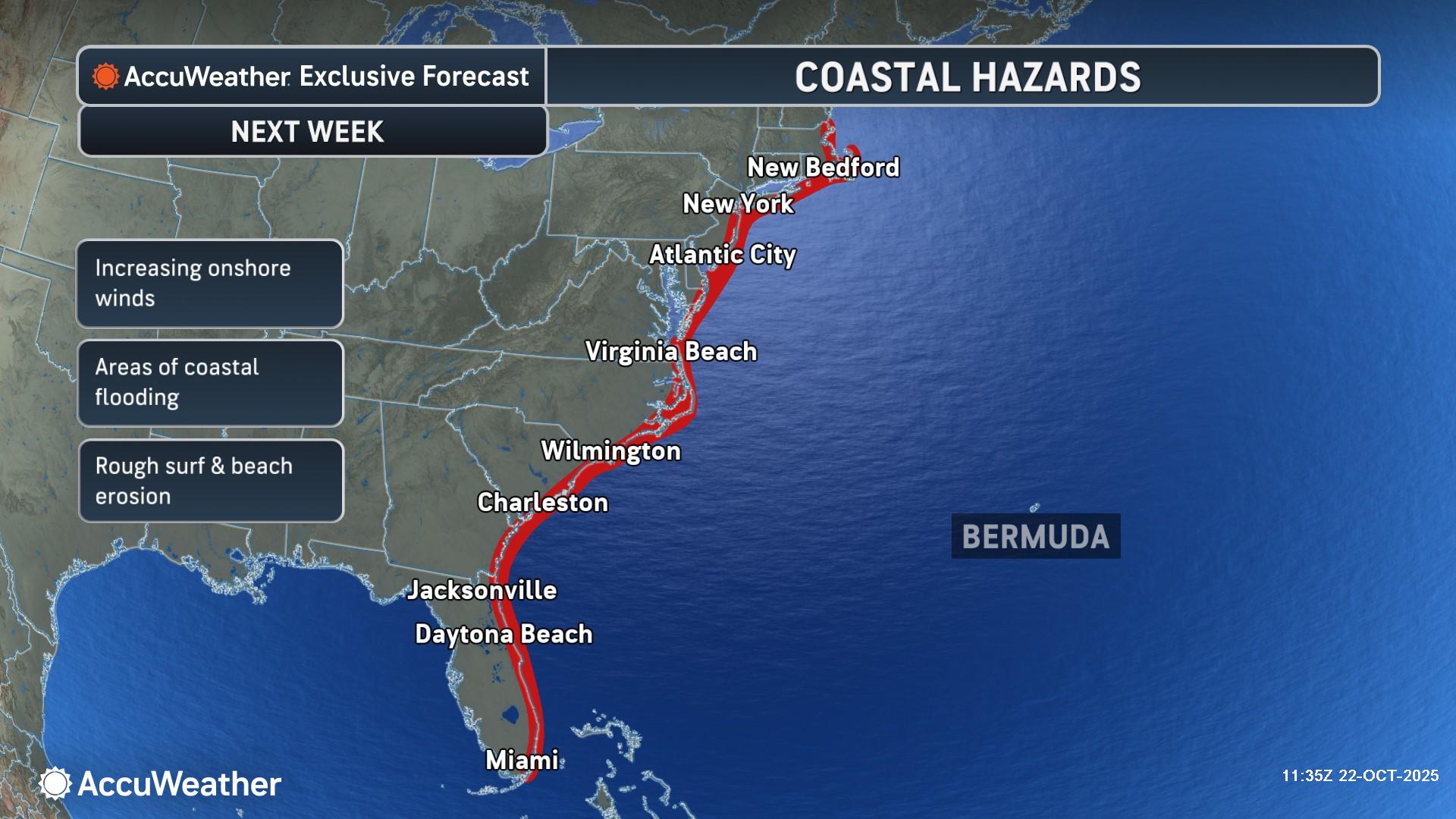
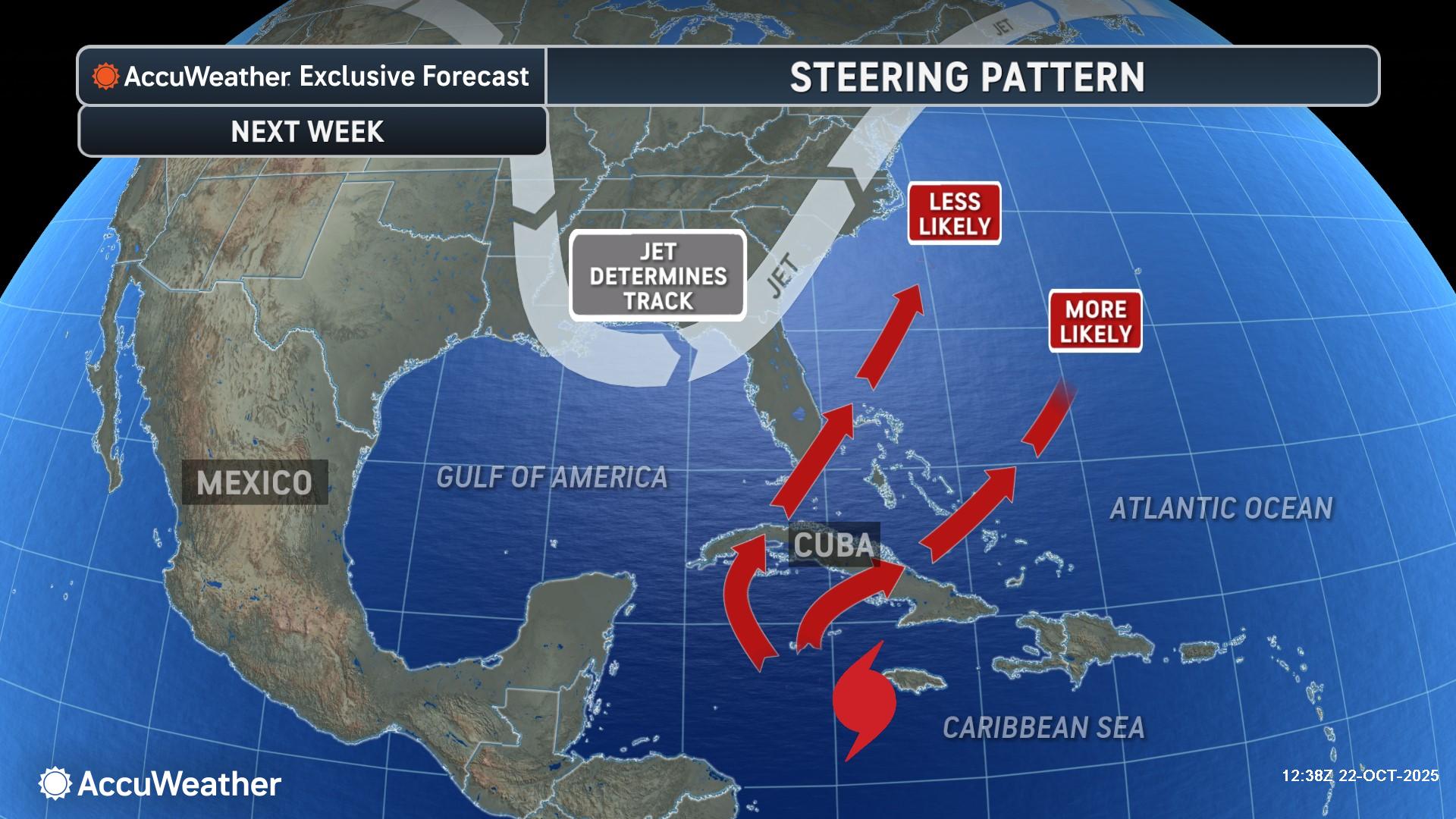
“Melissa has the potential to create a historic flooding disaster, especially if it slows to a crawl or stalls in the Caribbean. Catastrophic flooding in populated areas could lead to a humanitarian crisis, leaving a large number of people in need of food, safe drinking water, medical care and shelter,” AccuWeather® Chief Meteorologist Jonathan Porter said.
- AccuWeather® hurricane experts have upgraded Melissa to a 4 for the western Caribbean and a 1 for Puerto Rico on the AccuWeather RealImpact™ Scale for Hurricanes, due to the increasing risk of widespread life-threatening flooding, rain, mudslides and strong winds in the region.
- A 4 on the AccuWeather RealImpact™ Scale for Hurricanes warns of widespread catastrophic flooding that may last days to weeks, widespread power outages, structural damage to many buildings, especially near the coast, and severe coastal inundation.
“AccuWeather has rated Melissa a 4 on the AccuWeather RealImpact™ Scale for Hurricanes for the western Caribbean, which is one rating lower than the maximum rating on our scale. Initially, the biggest threat from Melissa this week is flooding rainfall, but damaging winds and storm surge can become a greater risk this weekend or early next week as Melissa strengthens. The Saffir-Simpson Hurricane Wind Scale considers only the maximum sustained wind speed of a storm. The innovative AccuWeather six-point scale considers wind speed, flooding rainfall, storm surge, and the projected total damage and economic loss from a storm. AccuWeather’s unique scale communicates a more comprehensive representation of a storm’s potential impact, so people and businesses can be better informed, stay safer and make the best weather-impacted decisions. People could be left unaware and underprepared if they rely on forecast or storm ratings that focus solely on wind speed.”
Disclaimer
The information contained in South Florida Reporter is for general information purposes only.
The South Florida Reporter assumes no responsibility for errors or omissions in the contents of the Service.
In no event shall the South Florida Reporter be liable for any special, direct, indirect, consequential, or incidental damages or any damages whatsoever, whether in an action of contract, negligence or other tort, arising out of or in connection with the use of the Service or the contents of the Service. The Company reserves the right to make additions, deletions, or modifications to the contents of the Service at any time without prior notice.
The Company does not warrant that the Service is free of viruses or other harmful components



